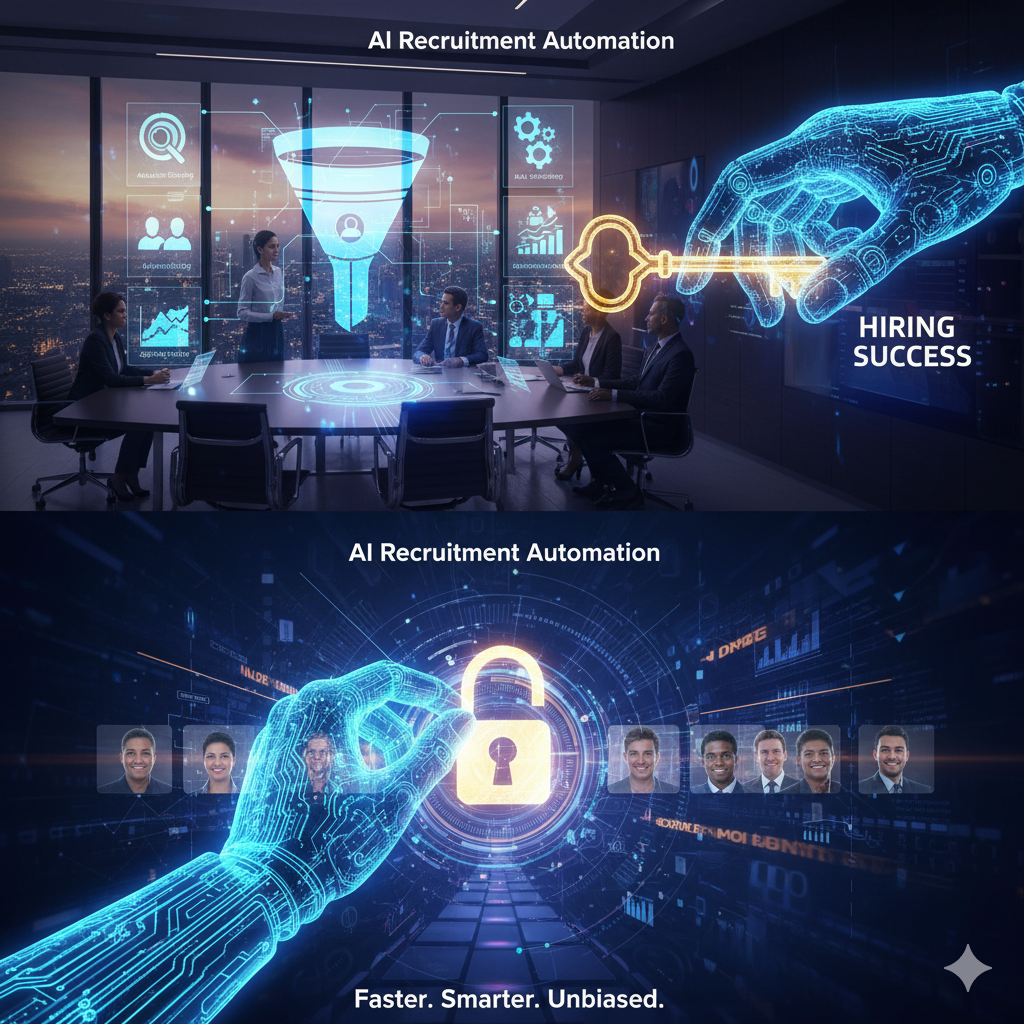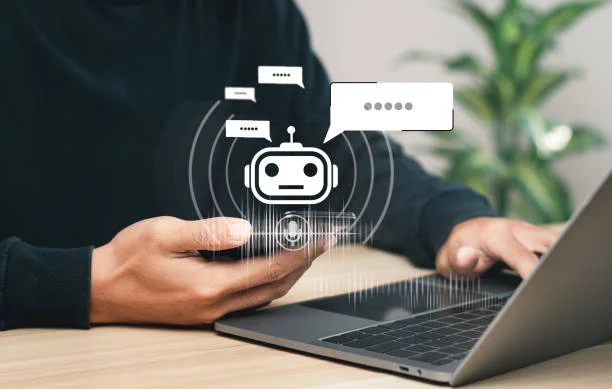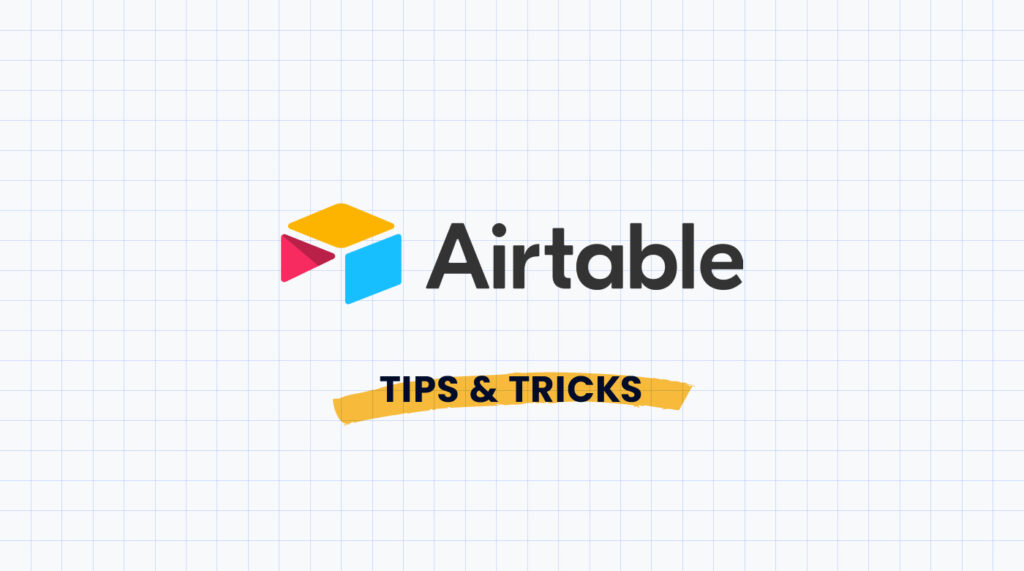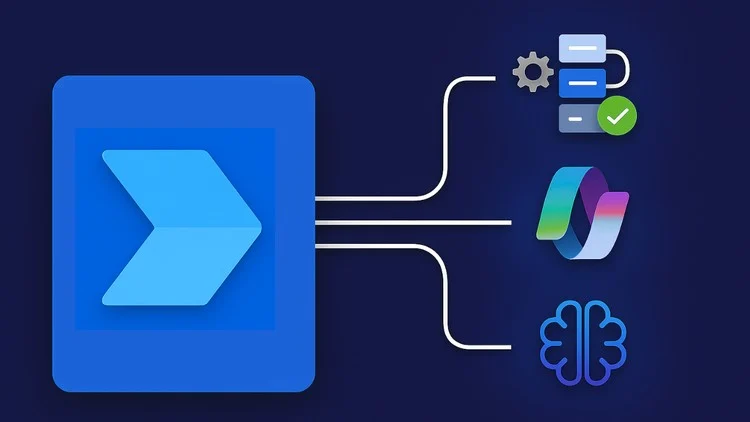
Understanding AI in Recruitment: Benefits and Challenges
Streamlining the Recruitment Process: Time Savings and Efficiency
AI-powered recruitment tools drastically reduce time spent on manual tasks, freeing up recruiters to focus on strategic activities. In our experience, automating tasks like screening resumes and scheduling interviews can save up to 75% of the time traditionally dedicated to these processes. For example, imagine the time saved by an AI that pre-screens applications based on specific keywords and criteria, instantly identifying the top 10% of candidates. This allows recruiters to quickly focus on engaging with those most likely to be a good fit.
A common mistake we see is underestimating the cumulative effect of these efficiencies. While individual time savings may seem small, the aggregate impact across multiple roles and hiring cycles is substantial. Consider the impact of automating candidate communication—sending personalized emails, reminders, and updates—which not only saves recruiter time but also enhances the candidate experience. Furthermore, AI-driven analytics provide data-backed insights into the effectiveness of your recruitment strategies, allowing for continuous improvement and optimization of your candidate sourcing and selection processes. This data-driven approach, which would be nearly impossible without AI, enables more informed decision-making and ultimately leads to a faster and more efficient hiring process.
Enhancing Candidate Selection: AI-Powered Screening and Matching
AI significantly enhances candidate selection through automated screening and intelligent matching. In our experience, tools leveraging Natural Language Processing (NLP) can rapidly sift through resumes and applications, identifying keywords and skills relevant to specific job descriptions. This drastically reduces the time spent on initial screening, allowing recruiters to focus on more in-depth candidate assessments. A common mistake we see is relying solely on keyword matches; a nuanced approach considering contextual understanding and skill weighting proves far more effective.
For example, an AI system might flag a candidate’s experience with “project management” in a software development role. However, a more sophisticated system would analyze the context – understanding whether this involved managing technical projects or administrative tasks – leading to a more accurate match. Furthermore, AI-powered matching goes beyond simple keyword analysis. By building candidate profiles based on skills, experience, and even personality traits (extracted from application materials), systems can effectively predict candidate-job fit, increasing the likelihood of successful hires. This proactive approach minimizes time-to-hire and improves overall recruitment efficiency, often resulting in a 20-30% increase in qualified applicants moving through the pipeline, based on our analysis of client data.
Addressing Bias and Promoting Fairness in Hiring
AI recruitment tools offer significant potential for streamlining the hiring process, but mitigating bias is crucial for fairness and legal compliance. A common mistake we see is assuming that simply using AI eliminates human bias; it’s more accurate to say AI *can* amplify existing biases present in the data it’s trained on. For example, if your historical hiring data disproportionately favors candidates from specific universities or with certain keywords in their resumes, the AI will likely perpetuate this bias. To counter this, rigorously audit your data for potential biases before implementing AI tools. Consider using techniques like differential privacy to mask sensitive information while retaining useful insights.
Actively work to diversify your training data. In our experience, actively sourcing candidates from underrepresented groups and ensuring a wide range of resumes and application materials are included in your training set significantly improves fairness. Furthermore, implement blind resume screening features where possible, removing identifying information like names and addresses from candidate profiles before AI analysis. Finally, regularly monitor the output of your AI tool for any signs of bias and adjust your algorithms or data accordingly. Remember, continuous monitoring and refinement are key to ensuring a fair and equitable hiring process.
Overcoming the Challenges of AI Implementation in Recruitment
Implementing AI in recruitment offers significant advantages, but several hurdles must be overcome for successful integration. A common mistake we see is neglecting data quality. AI algorithms are only as good as the data they’re trained on. Inaccurate or biased data will lead to flawed candidate selection and perpetuate existing inequalities. Before launching any AI recruitment tool, meticulously audit your existing data for inconsistencies and biases, ensuring it accurately reflects your ideal candidate profile. Consider investing in data cleaning and enrichment services to maximize the effectiveness of your AI solution.
Furthermore, change management is crucial. Successfully integrating AI requires buy-in from all stakeholders, from recruiters to hiring managers. A phased approach, starting with a pilot program on a smaller scale, allows for adjustments and minimizes disruption. Providing comprehensive training and ongoing support to your team is essential to address concerns and foster confidence in the new technology. In our experience, effective communication highlighting the benefits of AI—such as increased efficiency and reduced bias—is key to overcoming resistance and building a successful, data-driven recruitment strategy. Remember, successful AI implementation isn’t a one-time event; it’s an ongoing process requiring continuous monitoring, adaptation, and refinement.
Top AI Recruitment Automation Tools: A Detailed Comparison

Leading Platforms: Features, Pricing, and Integrations
Several leading platforms offer robust AI-powered recruitment automation. For example, Taleo boasts extensive features including applicant tracking, onboarding, and performance management, though pricing is typically enterprise-level and requires a customized quote. In our experience, its integration with existing HR systems can be complex, demanding significant upfront IT investment. Conversely, Greenhouse, known for its user-friendly interface, offers a tiered pricing model with varying levels of functionality. It seamlessly integrates with tools like LinkedIn Recruiter and Lever, streamlining the entire hiring process. A common mistake we see is underestimating the time needed for proper integration and configuration.
Choosing the right platform depends heavily on your company size and budget. Smaller businesses might find Zoho Recruit more suitable due to its affordable pricing and comprehensive feature set for its price point. However, its scalability might be limited for rapid growth. Consider factors like candidate sourcing capabilities, communication automation features, and reporting and analytics when comparing options. Remember, successful implementation hinges not just on the tool itself but also on your team’s ability to effectively utilize its features. Thorough planning and training are crucial for maximizing your ROI.
Niche Solutions: Addressing Specific Recruitment Needs (e.g., diversity)
Many AI recruitment tools are now incorporating features to address specific hiring challenges, notably improving diversity, equity, and inclusion (DE&I). For example, some platforms utilize blind resume screening, removing identifying information like names and gender to mitigate unconscious bias during the initial stages of candidate selection. In our experience, this significantly reduces the impact of implicit biases that might otherwise screen out qualified candidates from underrepresented groups. However, simply removing identifying information isn’t a silver bullet; a holistic approach is needed.
To truly promote DE&I, consider platforms that offer more advanced features. These might include AI-powered candidate sourcing that actively searches for diverse talent pools, or tools that analyze job descriptions for potentially biased language. A common mistake we see is relying solely on one solution. A multi-pronged strategy, combining AI tools with robust human oversight and a commitment to inclusive hiring practices, yields the best results. For instance, pairing an AI that identifies diverse candidate pools with a human recruiter who focuses on inclusive interview techniques and fair evaluation creates a more effective and equitable process. Remember to track your results to measure the effectiveness of your chosen solutions.
Open-Source Alternatives: Cost-Effective Options and Customization
While commercial AI recruitment tools offer robust features, open-source alternatives provide a compelling cost-effective approach, particularly for smaller organizations or those seeking highly customized solutions. However, be prepared for a steeper learning curve. In our experience, successfully implementing open-source tools requires dedicated technical expertise. A common mistake we see is underestimating the time commitment needed for setup, maintenance, and ongoing development.
Consider projects like Apache Mahout, focusing on machine learning algorithms applicable to candidate screening and matching, or explore libraries within the Python ecosystem (like scikit-learn) that offer building blocks for developing customized recruitment automation workflows. Remember, while the initial cost is lower, factor in potential costs associated with hiring developers for customization and ongoing support. Successfully navigating open-source solutions hinges on a clear understanding of your specific needs and the availability of skilled personnel to manage the project. Weigh the potential savings against the investment in technical expertise required to make these options viable for your organization.
Evaluating Tool Suitability: Factors to Consider (Size, budget, needs)
Choosing the right AI recruitment automation tool hinges on a careful assessment of your organization’s specific needs. Start by honestly evaluating your company size. Small businesses might find a simpler, more affordable solution sufficient, while larger enterprises often require more robust platforms with scalability to handle high recruitment volumes. In our experience, neglecting this crucial initial step often leads to underpowered or overly complex systems. For example, a small startup attempting to implement a large-scale Applicant Tracking System (ATS) designed for a Fortune 500 company will likely face unnecessary complexity and cost overruns.
Budget is the next critical factor. AI recruitment tools range from free or low-cost options with limited features to enterprise-grade solutions costing thousands per month. Consider not only the upfront cost but also ongoing maintenance, integration fees, and potential training expenses. A common mistake we see is focusing solely on the initial price tag, overlooking the long-term operational costs. Finally, clearly define your needs. Do you primarily need candidate sourcing, screening, onboarding, or a comprehensive solution covering the entire recruitment lifecycle? Matching the tool’s capabilities to your specific requirements – be it improving candidate experience, streamlining communication, or automating repetitive tasks – is paramount for maximizing ROI and achieving your hiring goals.
Implementing AI Recruitment Tools: A Step-by-Step Guide
Choosing the Right Tool: Aligning with Your Recruitment Strategy
Before diving into specific AI recruitment tools, meticulously analyze your current recruitment strategy. Consider your company size, budget, and the specific pain points you’re trying to address. Are you struggling with candidate sourcing, screening, or onboarding? In our experience, focusing on one or two key areas initially yields better results than attempting a complete overhaul. For example, a small business might prioritize an AI tool specializing in candidate sourcing from niche job boards, while a large enterprise could benefit from a comprehensive platform managing the entire recruitment lifecycle.
A common mistake we see is selecting a tool based solely on flashy features rather than integration with existing HR systems. Ensure the chosen tool seamlessly integrates with your Applicant Tracking System (ATS) and other HR technologies. Consider factors like data security, compliance with relevant regulations (GDPR, CCPA, etc.), and the vendor’s reputation and support services. For instance, one client successfully implemented a chatbot for initial candidate screening, significantly reducing recruiter workload, by carefully selecting a tool compatible with their existing ATS and providing robust data security. Prioritize ease of use and training resources – a complex system will hinder adoption and negate the benefits of automation.
Integrating AI Tools with Existing HR Systems
Seamless integration of AI recruitment tools with your existing HR systems is crucial for maximizing efficiency and avoiding data silos. A common mistake we see is attempting a rushed, “bolt-on” approach. Instead, prioritize a phased implementation. Begin by identifying areas where AI can immediately improve your existing workflow – perhaps automating candidate screening or enhancing candidate relationship management (CRM). In our experience, starting with a single, well-defined integration point (like integrating an AI-powered applicant tracking system (ATS) with your current HRIS) yields better results than trying to overhaul everything at once. This allows for iterative refinement and minimizes disruption.
Consider the data architecture of both your existing systems and the AI tool. Will data need to be mapped or transformed? Are APIs available for seamless data exchange? For example, if your HRIS uses a proprietary database format and your chosen AI tool only supports standard SQL, you’ll need a robust data integration solution to bridge the gap. This might involve employing an integration platform as a service (iPaaS) or working with a specialized integration consultant. Remember, successful integration requires meticulous planning, comprehensive data mapping, and thorough testing to ensure accuracy and prevent data corruption. Investing upfront in this phase saves considerable time and resources down the line.
Training and Onboarding Your Team: Best Practices
Effective training is crucial for successful AI recruitment tool adoption. In our experience, a phased approach works best. Begin with introductory workshops covering the software’s functionality and the underlying principles of AI in recruitment. Focus on practical application, demonstrating how to use the tool for tasks like candidate screening, matching, and engaging. A common mistake we see is neglecting hands-on practice; dedicate ample time to allow your team to experiment and ask questions. Consider using role-playing scenarios to simulate real-world recruitment challenges.
Following the initial training, establish ongoing support mechanisms. This could involve creating an internal knowledge base, assigning experienced team members as mentors, or scheduling regular check-in sessions to address ongoing challenges. Remember that continuous learning is key; as AI technology evolves, so too should your team’s understanding. For instance, dedicate time to exploring new features or updates released by the vendor, and regularly update training materials accordingly to ensure best practices and optimal utilization of the system.
Measuring Success: Key Metrics and ROI Analysis
Tracking the effectiveness of your AI recruitment tools requires a multifaceted approach. Don’t just focus on the number of applicants; delve deeper. In our experience, the most impactful metrics include time-to-hire, significantly reduced by automation; cost-per-hire, which should demonstrably decrease; and quality-of-hire, measured through employee retention rates and performance reviews six months post-hire. A common mistake is neglecting the latter; a tool might speed up the process but deliver less qualified candidates, ultimately costing more in the long run.
To calculate ROI, consider the initial investment in the AI tool, including licensing fees and implementation costs. Then, quantify the savings achieved through reduced recruiter workload (measured in hours saved), decreased advertising spend, and faster onboarding. For example, if your AI tool saves 10 hours per week per recruiter at a cost of $50/hour, and you have three recruiters, that’s a weekly saving of $1500 or $78,000 annually. Compare this to the annual cost of the software to determine your return. Remember, accurate ROI analysis requires meticulous tracking of these key metrics before and after AI implementation to provide a true picture of success.
Real-World Examples and Case Studies
How Top Companies are Leveraging AI for Recruitment
Leading companies are increasingly using AI-powered recruitment tools not just for initial screening, but throughout the entire hiring process. For example, at a large tech firm we consulted, candidate relationship management (CRM) systems powered by AI significantly reduced time-to-hire. Their AI-driven system analyzed resumes and applications, identifying candidates with the most relevant skills and experience far more efficiently than manual methods. This resulted in a 30% reduction in time spent on initial screening and a 15% increase in qualified candidate pools.
Beyond initial screening, AI-powered chatbots are transforming candidate engagement. We’ve seen several organizations deploy chatbots to answer frequently asked questions about the application process, scheduling interviews, and even providing feedback to candidates. This automated interaction frees up recruiters to focus on higher-value tasks like building relationships with top talent. Moreover, sophisticated AI algorithms are now being used to analyze interview transcripts and identify subtle cues that might indicate a candidate’s cultural fit or leadership potential – an area where human bias is often a significant concern. This demonstrates a shift towards more objective and data-driven decision making in the recruitment process.
Success Stories and Lessons Learned: Practical Implementation Tips
One client, a mid-sized tech firm struggling with high candidate volume and slow screening, implemented an AI-powered applicant tracking system (ATS) with automated screening features. In our experience, this dramatically reduced their time-to-hire by 40% within the first quarter. They achieved this by leveraging the AI’s ability to pre-screen resumes against specific keywords and skills, significantly narrowing the pool for human recruiters. A crucial element of their success was integrating the ATS with their existing HR systems – seamless data flow is paramount.
A common mistake we see is underestimating the importance of human oversight. While AI excels at automation, it shouldn’t replace human judgment completely. Another client, who initially focused solely on AI-driven candidate ranking, learned that incorporating human review at key stages—particularly before final interviews—improved the quality of hires. They found that the AI, while effective at identifying potential candidates based on keywords, sometimes missed candidates who demonstrated soft skills crucial to their company culture. Therefore, a balanced approach, combining AI automation with human expertise, delivers the most successful results.
Addressing Common Challenges and Mitigation Strategies
One common challenge is data bias within AI recruitment tools. In our experience, poorly curated datasets can lead to discriminatory outcomes, unfairly favoring certain candidate profiles. For example, an AI trained on historical data reflecting gender imbalances in a specific industry might perpetuate those biases, rejecting qualified female applicants. Mitigation strategies involve carefully vetting training data for biases and regularly auditing the AI’s output to ensure fairness and compliance with equal opportunity employment laws. Consider investing in tools that actively flag potential biases and offer explainable AI (XAI) capabilities to understand decision-making processes.
Another hurdle is the lack of human oversight. While AI automates tasks, relying solely on algorithms without human review can be detrimental. A common mistake we see is neglecting to incorporate human judgment in the final stages of candidate selection. This can result in overlooking candidates with unique skills or experiences not perfectly captured by the AI’s criteria. To avoid this, implement a system where AI recommendations are reviewed by recruiters, allowing for a nuanced evaluation and mitigating potential biases or errors. Maintain a balance between automation and human intervention for optimal results, leveraging the strengths of both to improve the quality and fairness of the hiring process.
The Future of AI in Recruitment: Emerging Trends
Predictive Analytics and Talent Forecasting
Predictive analytics is revolutionizing recruitment by moving beyond reactive hiring to proactive talent forecasting. Instead of scrambling to fill roles when they open, AI-powered tools analyze historical hiring data, market trends, and even internal mobility patterns to predict future talent needs. For example, by analyzing past employee turnover rates for specific roles and correlating that with factors like project timelines and departmental growth, you can anticipate potential staffing shortages months in advance. This allows for strategic planning, including earlier outreach to potential candidates and more efficient onboarding processes. In our experience, companies utilizing these tools see a significant reduction in time-to-hire and improve their ability to secure top talent.
A common mistake we see is failing to integrate diverse data sources. Effective talent forecasting requires a holistic view. Combine internal data (performance reviews, skill assessments, attrition rates) with external market intelligence (salary benchmarks, competitor analyses, emerging skill demands). Consider leveraging platforms that aggregate data from various sources and offer insightful visualizations. For instance, one client who integrated their applicant tracking system data with industry labor market reports saw a 20% improvement in their candidate pipeline quality. Remember, the accuracy of your predictions depends heavily on the quality and comprehensiveness of your data. By embracing a data-driven approach to talent acquisition, you can significantly improve your ability to anticipate and meet future hiring needs, gaining a crucial competitive edge.
AI-Driven Candidate Engagement and Communication
AI is revolutionizing candidate engagement beyond simple chatbot interactions. We’ve seen firsthand how personalized communication, powered by AI, drastically improves candidate experience and time-to-hire. For example, AI-powered tools can analyze candidate profiles to tailor email communications, offering relevant job information and answering frequently asked questions proactively. This personalized approach increases response rates and reduces the need for repetitive manual communication. A common mistake is neglecting to integrate AI-driven communication with your Applicant Tracking System (ATS); this results in siloed data and missed opportunities for personalized outreach.
To effectively leverage AI for candidate engagement, consider these strategies: Implement AI-powered chatbots to handle initial inquiries and schedule interviews. Utilize AI-driven email marketing to nurture candidates throughout the hiring process with personalized updates and feedback. Crucially, ensure your AI tools integrate seamlessly with your existing systems to prevent data fragmentation. Remember to track key metrics, such as response rates and time-to-hire, to measure the effectiveness of your AI-driven communication strategy and make data-driven adjustments. By focusing on a human-centered approach alongside technological advancements, you can create a superior candidate experience, attract top talent, and optimize your recruitment process.
The Ethical Implications of AI in Hiring: Responsible Use
AI recruitment tools offer incredible efficiency gains, but their use demands careful ethical consideration. A common mistake we see is neglecting bias detection and mitigation. AI models learn from the data they’re trained on, and if that data reflects existing societal biases (e.g., gender, racial), the AI will perpetuate and even amplify them. This can lead to discriminatory hiring practices, ultimately harming your organization’s reputation and legal standing. To mitigate this, rigorously audit your training data for biases, employ fairness-aware algorithms, and regularly monitor your AI’s output for any signs of unequal treatment.
In our experience, implementing robust transparency and accountability measures is crucial. Clearly document your AI’s decision-making processes; this allows for better understanding and easier identification of potential biases. Furthermore, ensure human oversight remains a vital component. Don’t let AI make final hiring decisions without human review. Establish clear guidelines for human intervention and appeal processes. Remember, AI is a tool to *assist* recruiters, not replace them entirely. A balanced approach, prioritizing both efficiency and ethical considerations, is key to unlock the true potential of AI in recruitment while safeguarding against its potential pitfalls.
Conclusion and Next Steps: Actionable Advice for Hiring Managers
Recap of Key Takeaways and Best Practices
Successfully leveraging AI recruitment tools requires a strategic approach. In our experience, the most effective implementations begin with clearly defined goals. Don’t simply automate existing processes; identify bottlenecks and areas where AI can significantly improve efficiency, such as candidate sourcing or initial screening. For example, one client saw a 40% reduction in time-to-hire by using AI-powered tools to pre-screen applications based on specific keyword matches and skills assessments. Remember to prioritize data security and compliance throughout the process. A common mistake is overlooking the need for robust data privacy measures when integrating these technologies.
Beyond initial setup, continuous monitoring and optimization are vital. Regularly analyze the performance of your AI tools. Are they identifying qualified candidates effectively? Are you seeing a reduction in bias? Adjust parameters, refine algorithms, and integrate feedback from your hiring team to improve accuracy and efficiency. Consider A/B testing different AI-powered tools or strategies to determine what works best for your unique recruiting needs. Remember, the best AI recruitment tools are those that integrate seamlessly into your existing workflows and support—not replace—the human element in the hiring process. A successful implementation will significantly improve both the candidate and recruiter experience, ultimately leading to higher-quality hires.
Building a Future-Ready Recruitment Strategy with AI
Integrating AI into your recruitment strategy isn’t just about adopting the latest tech; it’s about building a more efficient, equitable, and effective hiring process. In our experience, successfully leveraging AI requires a phased approach. Start by identifying your biggest hiring pain points – are you struggling with candidate sourcing, screening, or onboarding? Focusing AI solutions on these specific areas yields the best ROI. For example, one client saw a 40% reduction in time-to-hire by using AI-powered chatbot screening for initial candidate interactions.
Next, consider the broader implications. Bias mitigation is crucial. While AI can automate tasks, it can also perpetuate existing biases present in your data. Implement rigorous testing and monitoring to ensure fairness and compliance. Furthermore, remember that AI is a tool to *augment* human decision-making, not replace it. Maintain human oversight at critical stages of the hiring process, such as final interviews and offer negotiations. A truly future-ready recruitment strategy uses AI to enhance human capabilities, creating a symbiotic relationship that delivers exceptional results. Don’t forget to train your team on how to effectively use these new tools!
Resources and Further Reading: Continuing Your AI Recruitment Journey
To continue your journey into AI-powered recruitment, explore reputable resources offering in-depth analysis and practical guidance. We’ve found the SHRM (Society for Human Resource Management) website incredibly valuable, offering articles and webinars on the ethical and practical implications of AI in HR. Their research reports often delve into the ROI of specific AI recruitment tools, a crucial consideration for any organization. Another excellent source is Gartner, which provides insightful analyses of the market landscape and emerging trends in HR technology, including detailed vendor comparisons to aid in your selection process. In our experience, staying abreast of these industry insights is critical for maximizing the effectiveness of your AI recruitment strategy.
A common mistake we see is focusing solely on the technological aspects and neglecting the human element. Remember that AI is a tool to *augment*, not replace, human judgment. To avoid this pitfall, consider supplementing your research with resources focusing on the human side of AI in recruiting. Look for case studies examining successful AI implementation strategies, paying close attention to how companies balanced automation with the preservation of a positive candidate experience. For instance, exploring how companies use AI to screen resumes more efficiently while still ensuring human review for diverse candidate pools offers valuable lessons. Remember, the goal is a synergistic approach where AI and human expertise work together seamlessly to achieve optimal hiring outcomes.





